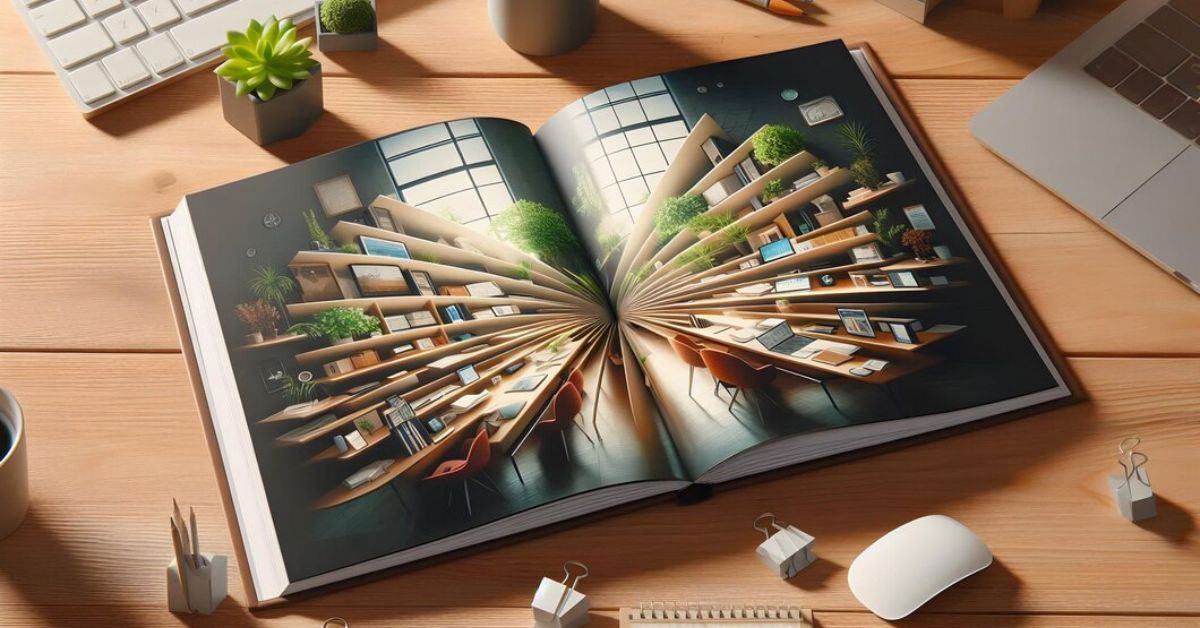Introduction to Booklet Design
Creating an engaging booklet involves more than just placing text and images onto a few pages. It’s about crafting a harmonious blend of visual and textual elements that captivate the reader’s attention and keep them informed from cover to cover. The right techniques can transform your booklet from a simple collection of pages into a powerful communication tool. Whether you are designing marketing materials, annual reports, event programs, or instructional manuals, mastering booklet design can elevate the effectiveness of your printed materials. In a world where digital content often overwhelms, a well-designed booklet can serve as a tactile and memorable piece of work that stands out.
Principles of Design
Understanding key design principles such as balance, contrast, and alignment can make a significant impact on your booklet’s appeal. These principles ensure your booklet is visually attractive and easy to navigate. Balance in visual design helps create a sense of equilibrium where no section of the page overpowers the other, lending a pleasing aesthetic that guides a reader’s eye comfortably. Contrast, meanwhile, leverages differences in color, shape, and size to highlight essential information, drawing the reader’s attention precisely where you want it. Consistent alignment offers a clean and organized appearance, enhancing readability and professionalism. These foundational elements are integral to any design project but are extraordinarily impactful in booklets, where space is limited, and every visual choice must serve to clarify and engage.
High-Quality Imagery
Images play a crucial role in capturing the audience’s attention. High-resolution photos, infographics, and illustrations can make your content stand out by providing depth and context that words alone cannot cover. According to a study by Venngage, articles with images receive 94% more views than those without, reinforcing the idea that visuals are vital to capturing and retaining interest. With images, you can articulate complex ideas swiftly and memorably, particularly in fields where the subject matter benefits from visual representation, such as architecture, fashion, or culinary arts. Avoid using generic stock photos that lack authenticity and instead invest in custom images or professional photography. This ensures that your visuals are not just placeholders but integral, cohesive parts of your booklet’s message, capable of leaving a lasting impression on your audience.
Effective Typography
Typography is another vital aspect of booklet design. The choices you make in terms of font selection and sizing can dramatically affect readability and overall aesthetics. It’s essential to align your font choice with the theme and purpose of your booklet. A study from MIT found that readable fonts significantly enhance comprehension, facilitating longer reader engagement with the content. Therefore, it’s crucial not to underestimate the power of good typography. A harmonious blend of style and readability can enhance a booklet’s appeal and effectiveness. Avoid overly decorative fonts, which can become taxing when read in sizeable text blocks. Instead, use clean and simple font types for body text, reserving more elaborate styles for titles or section headers. This creates a visual hierarchy that naturally guides the reader’s eye, ensuring a seamless reading experience and maintaining the booklet’s visual consistency.
Storytelling Techniques
Storytelling isn’t just for novels. Storytelling techniques can engage readers by making the content more relatable and memorable when applied to booklet design. Forbes highlights the effectiveness of using stories in marketing to foster a deeper connection with the audience. Framing your content around a narrative can transform dry information into a compelling journey for your reader, especially in booklets that illustrate your company’s history, mission, or customer testimonials. Creating a human element through storytelling turns abstract or complex concepts into graspable and engaging ideas. Case studies, success stories, and customer testimonials are powerful methods of humanizing your content and building a stronger emotional connection with your audience. This approach encourages readers to invest emotionally and cognitively in your message, enhancing their engagement and retention.
Layout and Structure
The layout and structure of your booklet are indispensable in ensuring reader engagement. A well-organized layout not only augments visual appeal but is crucial in elevating the reading experience. Using short paragraphs, bullet points, and numbered lists effectively can break down dense information, making it more digestible. This approach is particularly effective for instructional or educational booklets where the reader needs to process and comprehend details quickly. Incorporating sufficient white space is fundamental to avoid overwhelming the reader, offering their eyes a place of rest amidst content sections. A meticulously structured layout functions as a visual guide that intuitively leads readers through the booklet in a logical order, guaranteeing that crucial areas of information are effortlessly accessible and predominantly featured.
Environmentally Friendly Printing
In today’s world, where sustainability is integral to many industries, opting for environmentally friendly printing solutions can reduce your carbon footprint while producing superior booklets. Many professional printing services offer sustainable options like recycled paper and soy-based inks. These environmentally sensitive choices contribute to a more sustainable future and align your brand with a growing consumer demand for eco-friendly solutions. Choosing green practices enhances your brand’s image and shows commitment to social responsibility, elements that resonate deeply with audiences, build goodwill, and foster brand loyalty. Adopting these printing methods does not compromise the quality of your finished product and provides a strategy to appeal to environmentally conscious consumers.
Final Thoughts
Creating an engaging booklet requires a thoughtful design, content, and sustainability approach. By incorporating these strategies, you can produce a booklet that grabs attention and retains it, making your communication efforts sharply effective and impressively memorable. Your content becomes not just information but an engaging experience that connects with your readers on multiple levels. Remember, a well-designed booklet is an invaluable tool that communicates your message powerfully while establishing a tactile connection that digital mediums often lack. By prioritizing quality and creativity, your booklet can achieve a seamless blend of informative content and eye-catching design that resonates with readers long after they’ve put it down.
